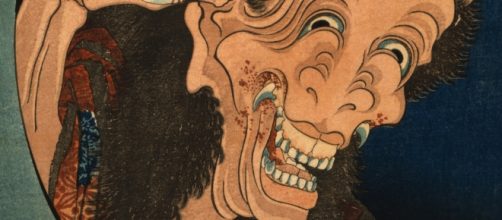There can be few iconic works of art that are as instantly recognisable as a small Japanese woodblock print, gracing the walls of students and art galleries. 'The Great Wave' has been admired by artists such as David Hockney and Grayson Perry. Vincent Van Gogh said in awe,“These waves are claws, the boat is caught in them, you can feel it.”
However, not much is known of Katsushika Hokusai, the artist who created the 'Great Wave.' To rectify this, the British Museum in London has opened the first UK exhibition to focus on the later years of his life and art legacy.
Tim Clark, the show’s curator says Hokusai is “Japan’s greatest artist. He believed the older he got, the better he would become. He picked up a brush when he was six and said that nothing he did before the age of 70 was of note.”
He wasn’t far off the truth as Hokusai created the 'Great Wave' in around 1831 when the artist was the grand old age of 72.
Portrayals of Sexuality
The artist spent many years perfecting his craft and did not shy away from controversial topics. In the later years of his life, Hokusai was drawn to painting beautiful youths such as 'Young man seated on a bench,' 1840.
From the style of dress and the flowing sleeves, art experts believe they portray actors who played female roles.
The age and elaborate hairstyles could also suggest that they represented male sex workers.
A poem written by Hokusai above the picture of 'Young man seated on a bench,' 1840, reads “Why does he seem so lost in thought, like a beautiful woman, as he rests there on the bench, overcome with waves of tears?”
Depictions of demons
Japanese folklore and myth are full of gruesome stories which Hokusai loved drawing.
The western world learned much of this exotic world from Hokusai’s work. One of the most startling artworks in the show is 'The Laughing demoness', a sharp-fanged image of a horned woman, holding the blue and bloodied head of a baby in her taloned hand. She is said to depict Yamamba, a mountain woman of folk legend who was said to devour infants.
There is also a wonderful figure of Shoki, painted in red with a full, wispy beard and smiling benign face, who had the power to ward off disease and demons. A commission of this painting was probably used as a talisman to ward off smallpox as there was an epidemic of the disease in Edo (present-day Tokyo) at the time.
His daughter was an extremely talented painter and how much she helped him in his paintings has been debated by art historians for many years. Many experts believe that some of his works were actually painted by her.
'Types of women,' an 1847 illustration by Oi, shows women of different social classes including a merchant’s wife, a farmer’s spouse and a high-class courtesan. It’s a stunning black-and-white line drawing of women with an elaborate hairstyle, skewered with many long pins.
Oi signed the picture by the nickname she gave herself – ‘Tipsy’ – and she was known to have liked a drink.
The range of Hokusai’s work is truly astonishing, ranging from flowers to surreal creatures from Japanese folktales and representations of the Buddha.
But the 'Great Wave' is still Hokusai’s most memorable work. Hokusai died in poverty, wrapped in a lice-ridden blanket and painting almost until he breathed his last at the age of 90. It was many years before he achieved the recognition of a great artist. Now, his work is instantly recognisable, with early prints highly prized collectors’ items.
'Hokusai: beyond the Great Wave' is on at the British Museum until 13 August 2017.


